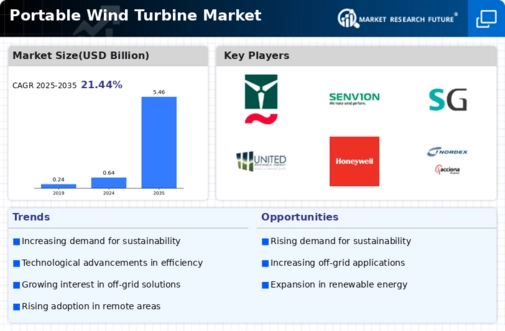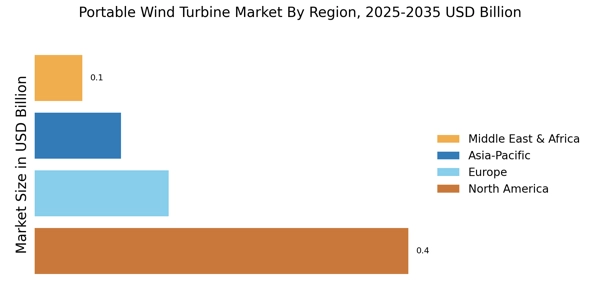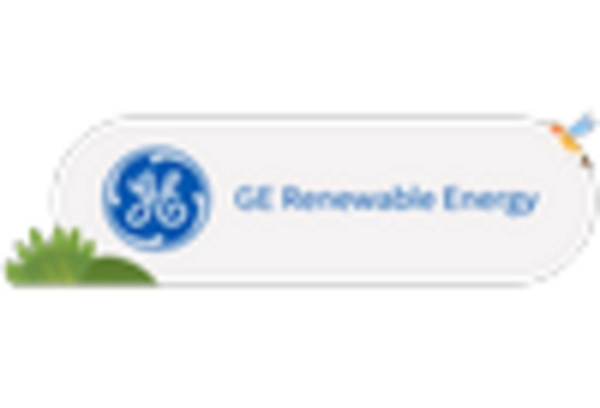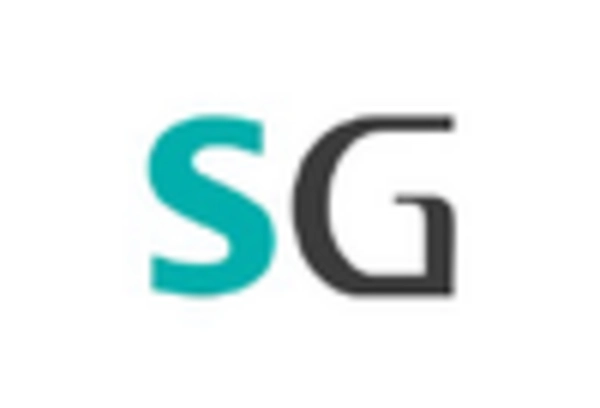Increasing Energy Independence
The Portable Wind Turbine Market is witnessing a surge in demand as individuals and communities seek to enhance their energy independence. This trend is driven by a growing awareness of the vulnerabilities associated with centralized energy systems. As energy prices fluctuate, consumers are increasingly inclined to invest in portable wind turbines, which offer a reliable and sustainable energy source. The market for portable wind turbines is projected to grow at a compound annual growth rate of approximately 12% over the next five years, indicating a robust interest in decentralized energy solutions. This shift towards energy independence not only empowers users but also aligns with broader environmental goals, making the Portable Wind Turbine Market a focal point for innovation and investment.
Rising Awareness of Climate Change
The Portable Wind Turbine Market is experiencing growth due to the increasing awareness of climate change and its impacts. As individuals and organizations recognize the urgent need to address environmental challenges, there is a corresponding rise in the demand for renewable energy solutions. Portable wind turbines offer a practical way to harness wind energy, contributing to a reduction in greenhouse gas emissions. This heightened awareness is not only driving consumer interest but also influencing policy decisions that favor renewable energy investments. Consequently, the Portable Wind Turbine Market is positioned to benefit from this growing consciousness about climate change and the need for sustainable energy alternatives.
Adoption in Remote and Off-Grid Areas
The Portable Wind Turbine Market is gaining traction in remote and off-grid areas where access to traditional energy sources is limited. These regions often face challenges related to energy supply, making portable wind turbines an attractive solution for providing reliable power. The ability to generate electricity without the need for extensive infrastructure makes these turbines particularly appealing for rural communities and disaster relief efforts. As the demand for energy solutions in off-grid locations continues to rise, the Portable Wind Turbine Market is likely to expand, offering innovative products that cater to the unique needs of these markets.
Environmental Sustainability Initiatives
The Portable Wind Turbine Market is significantly influenced by the global push for environmental sustainability. Governments and organizations are implementing policies aimed at reducing carbon emissions and promoting renewable energy sources. This regulatory environment encourages the adoption of portable wind turbines, which are seen as a viable solution for reducing reliance on fossil fuels. In many regions, incentives such as tax credits and grants are available for renewable energy projects, further stimulating market growth. The increasing emphasis on sustainability is expected to drive the Portable Wind Turbine Market, as consumers and businesses alike seek to align their energy consumption with eco-friendly practices.
Technological Innovations in Wind Energy
Technological advancements are playing a crucial role in shaping the Portable Wind Turbine Market. Innovations in turbine design, materials, and energy storage solutions are enhancing the efficiency and performance of portable wind turbines. For instance, the development of lightweight materials and improved blade designs has led to turbines that can generate more energy at lower wind speeds. This is particularly beneficial for users in areas with variable wind conditions. As technology continues to evolve, the Portable Wind Turbine Market is likely to see an influx of new products that cater to diverse consumer needs, thereby expanding its market reach.


















Leave a Comment